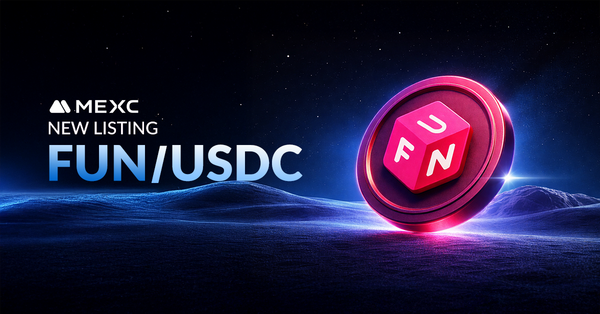Building a "Hello World" Smart Contract on Cardano Using Plutus
Smart contracts are self-executing programs stored on a blockchain that run when predetermined conditions are met. They allow developers to build decentralized applications (dApps) that can automate processes and transactions without third party intermediaries. Cardano, one of the leading blockchain platforms, supports smart contracts through its native Plutus programming language. In this article, we’ll walk through the process of building a simple "Hello World" smart contract on Cardano using Plutus.
Setting Up a Development Environment
The first step is setting up a development environment for writing Plutus smart contracts. This requires installing the Plutus Playground, a browser-based IDE that provides a simulated blockchain for testing contracts. You'll also need to install the Plutus CLI tools which compile Plutus code.
To get started:
- Install the Plutus Playground from the Plutus repository. Follow the instructions for your operating system.
- Install the Plutus CLI tools using Nix or Cabal. See the Plutus documentation for details.
Once set up, the Playground gives you a graphical interface for writing contracts while the CLI handles compilation.
Writing the Contract in Plutus
With the tools installed, it's time to write our "Hello World" contract. Plutus smart contracts consist of two parts - on-chain code which runs on the blockchain, and off-chain code which interacts with the on-chain code.
Here's the full on-chain code for a simple "Hello World" contract:
Copy code{-# LANGUAGE DataKinds #-} {-# LANGUAGE OverloadedStrings #-} {-# LANGUAGE TypeApplications #-} {-# LANGUAGE NoImplicitPrelude #-} module HelloWorld where import PlutusTx import qualified PlutusTx.Prelude as Plutus import Prelude (Bool (..), Maybe (..)) hello :: Plutus.BuiltinData -> () hello _ = Plutus.logInfo @"Hello World!"
This contract defines a hello function that simply logs the message "Hello World!" when executed.
To compile the contract:
Copy codeplutus compile hello-world.plutus
This will produce a .plc file we can use in the Plutus Playground.
Testing the Contract in the Plutus Playground
Next we'll load the compiled contract in the Plutus Playground to test it out.
- Open the Playground UI and click "Load Simulation"
- Upload the
.plcfile produced by the compiler - Open the "Wallet" tab
- Click the "Invoke hello" button to run the contract
You should see "Hello World!" logged indicating the contract executed successfully!
We now have a basic Plutus smart contract running on a simulated blockchain. But this is only the first step. Next we need to provide an off-chain component to interact with the contract.
Developing the Off-Chain Code
While the on-chain code defines the core logic of a Plutus dApp, the off-chain code handles wallet functions, transaction building, and interacting with the blockchain. For our "Hello World" contract, we can create a simple off-chain app in Haskell that calls the on-chain code.
Here is example off-chain code:
Copy codeimport HelloWorld import PlutusTx.Prelude import Ledger.Ada (lovelaceValueOf) main :: IO () main = hello
This imports the on-chain hello function and calls it when run. We would then compile the off-chain code to an executable that can invoke the smart contract.
In a real dApp, the off-chain code would handle more complex logic like generating transactions and monitoring the blockchain. But for our basic example, this is sufficient to test end-to-end functionality.
Deploying the Contract to the Cardano Testnet
Once we've tested our contract locally, we can deploy it to the Cardano testnet to interact with the live blockchain.
The overall deployment process involves:
- Setting up a Cardano node and wallet
- Funding the wallet with test ADA
- Building a transaction to deploy the contract
- Calling the deployed contract through transactions
Much more involved than our Playground simulation, but allows you to run Plutus contracts on real blockchain infrastructure.
Check out the Plutus Pioneer Program for guides on deploying to testnet.
Where to Go From Here
And that covers the basics of building a Plutus "Hello World" contract! While simple, it introduces the key concepts like the on-chain validator script and off-chain code that handles blockchain interaction.
To recap, we:
- Set up a Plutus development environment
- Wrote an on-chain contract in Plutus
- Tested it in the Plutus Playground simulator
- Added off-chain Haskell code to invoke the contract
- Discussed deploying to the Cardano testnet
Of course, this is just the starting point. From here you can start building more complex Plutus dApps with real world functionality. The possibilities are endless!
Some ideas for next steps:
- Add contract parameters and more complex logic
- Develop a full-featured off-chain application
- Deploy and test on the Cardano testnet
- Explore community learning resources like the Plutus Pioneer Program
The world of Cardano and Plutus is open to you - this tutorial provided a glimpse of how to get started building smart contracts the Plutus way. Feel empowered to experiment, iterate, and bring your ideas to life on the blockchain. Happy coding!
How can I improve my Plutus development skills?
Learning Plutus and building Cardano smart contracts takes practice and dedication. Here are some tips for taking your skills to the next level:
- Complete the Plutus Pioneer Program. This hands-on course teaches Plutus contract development through real-world examples and exercises. It's a great way to get experience and feedback.
- Experiment with contract parameters. Start by adding different data types like integers and booleans as parameters. Then try more complex examples using Plutus vesting schedules and Validator scripts.
- Read the Plutus documentation and sample code. The docs provide in-depth explanations of Plutus features and capabilities. Studying code examples is an excellent way to learn best practices.
- Build your own Plutus dApp. Choose an idea that excites you and work through designing, implementing, and testing a decentralized application end-to-end. Learning through creating something real is extremely valuable.
- Collaborate with other Plutus developers. Join the Cardano community forums and chat groups to ask questions, troubleshoot issues, and share knowledge. Learning together makes everyone stronger.
With a mix of structured learning, experimentation, documentation reading and hands-on practice, anyone can master Plutus smart contract development. It just takes hard work and persistence. Keep growing your skills and you'll be a Cardano pro in no time!
How can I make sure my Plutus contracts are secure?
As with any software, writing secure Plutus smart contracts requires forethought and care. Here are some tips to help boost security:
- Use formal verification. Tools like the Plutus Playground can verify code is mathematically correct before deployment. This prevents many bugs and errors.
- Minimize on-chain logic. Keep contract complexity to a minimum. Simple code is easier to thoroughly test and audit.
- Write comprehensive unit tests. Rigorously test all functions and edge cases. Good test coverage improves confidence in correctness.
- Perform multiple audits. Have experienced developers review the code to identify any potential vulnerabilities. Fresh eyes really help.
- ** Simulate running on-chain.** Use the Plutus Playground to emulate transactions and test thoroughly off-chain first.
- Ensure proper access controls. Functions should only be callable by authorized parties. This prevents abuse.
- Follow best practices. Adhere to the Plutus style guide, use immutable data structures, avoid recursion, etc.
- Update and monitor regularly. Post-deployment, watch for any emerging issues and be ready to patch if necessary.
- Make code open source. Transparency allows more extensive community review which strengthens security.
Prioritizing security from the start when learning Plutus pays dividends long-term in more robust, resilient Cardano smart contracts. Take it slow, be diligent, and leverage all available tools to mitigate risk.
Check our guide of the most promising crypto




